Salem, OR Pollen and Allergy Report for Summer 2023
Pollen Allergy Trends in Salem, OR
When is pollen lowest in Salem, OR?

February
Lowest month total PPM
Avg. PPM
When is pollen highest in Salem, OR?

April
Highest month total PPM
Avg. PPM
How does pollen in Salem, OR compare to Oregon?
Salem has a higher average PPM than the state of Oregon.
Salem yearly avg PPM:
Oregon yearly avg PPM:
How does pollen in Salem, OR compare to the USA?
Salem has a higher average PPM than the USA.
Salem yearly avg PPM:
USA yearly avg PPM:
Is pollen worse this year in Salem, OR?
Spring 2023 was worse than spring 2022.
Spring 2023 PPM:
Spring 2022 PPM:
Average PPM in Salem, OR
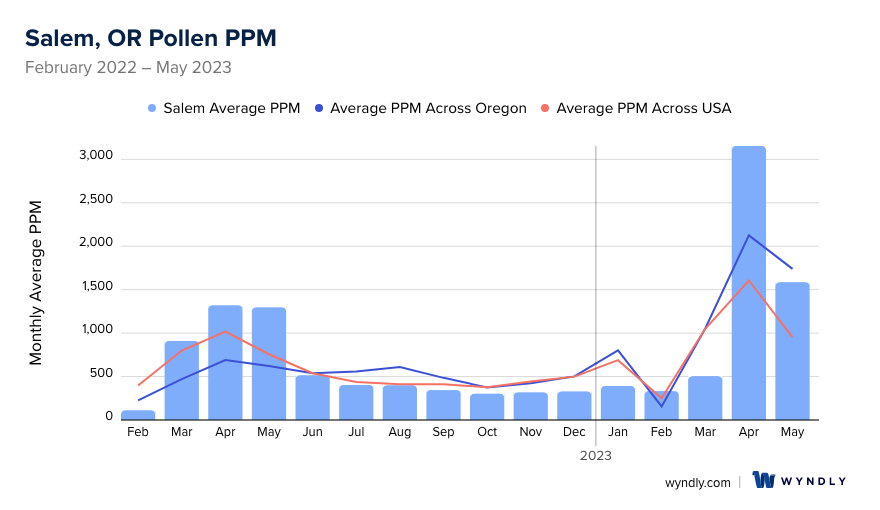
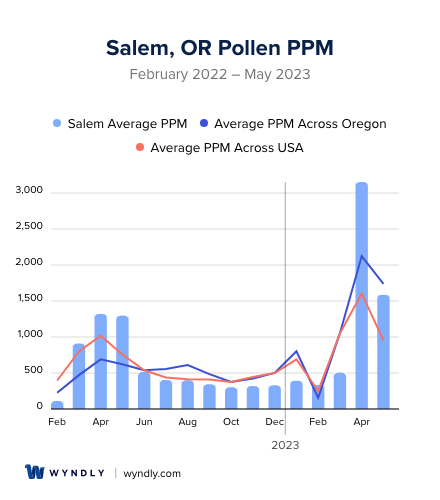
Salem, OR Pollen and Allergy Breakdown by Month
Grass
When is grass pollen highest in Salem, OR?
April has the highest grass pollen in Salem, OR with an average PPM of
When is grass pollen lowest in Salem, OR?
December has the lowest grass pollen in Salem, OR with an average PPM of
Tree
When is tree pollen highest in Salem, OR?
April has the highest tree pollen in Salem, OR with an average PPM of
When is tree pollen lowest in Salem, OR?
October has the lowest tree pollen in Salem, OR with an average PPM of
Weed
When is weed pollen highest in Salem, OR?
April has the highest weed pollen in Salem, OR with an average PPM of
When is weed pollen lowest in Salem, OR?
February has the lowest weed pollen in Salem, OR with an average PPM of
Salem, OR Pollen Monthly Breakdown by Pollen Type
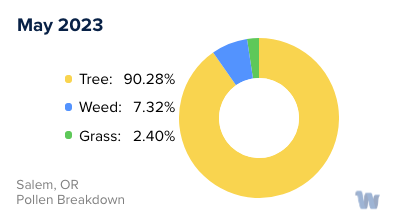
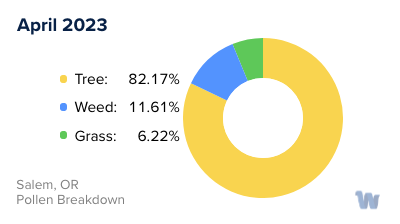
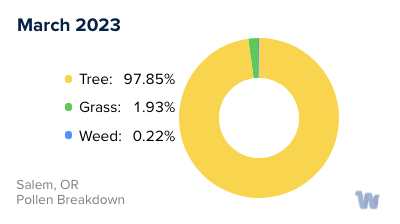
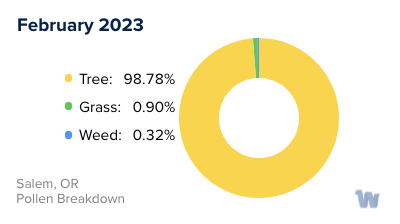
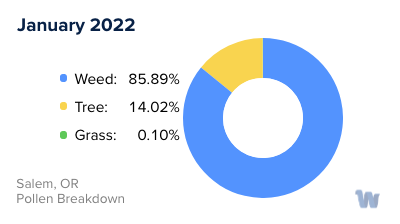
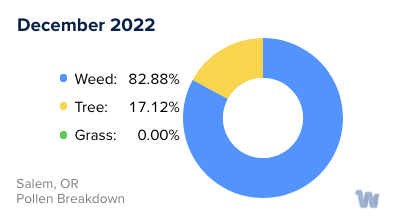
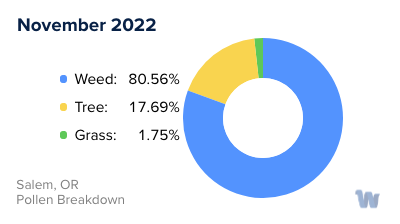
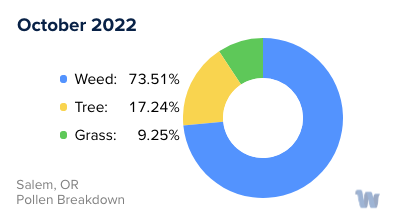
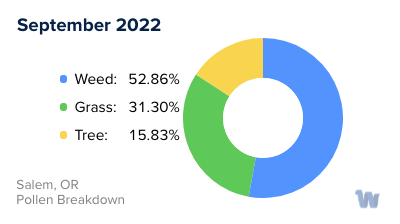
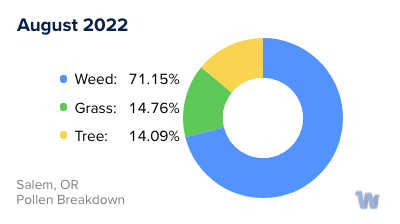
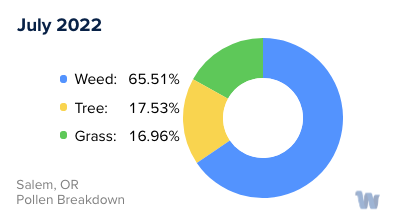
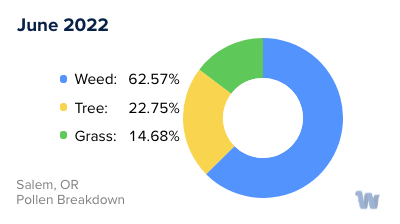
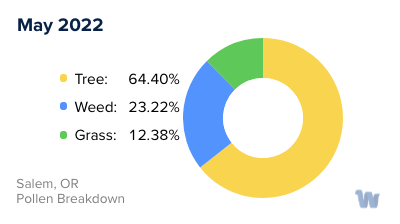
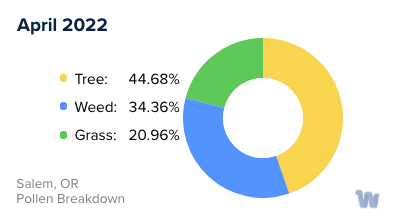
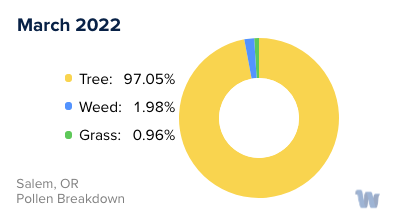
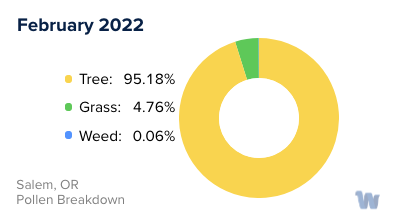
Pollen and Hay Fever in Salem, OR
Pollen allergies, also known as hay fever, are a common respiratory condition that affects many residents of Salem, Oregon. The city's diverse flora and temperate climate create an environment where various types of pollen thrive, triggering allergic reactions in susceptible individuals.
In Salem, different types of pollen play a significant role in causing hay fever symptoms. One of the primary culprits is tree pollen, which is abundant during the spring season. Trees such as oak, maple, birch, and pine release fine particles of pollen into the air, causing sneezing, itchy and watery eyes, nasal congestion, and even fatigue in individuals with allergies.
As the seasons progress, grass pollen becomes a major contributor to hay fever in Salem. Grasses like Bermuda grass, Timothy grass, and orchard grass release their pollen during late spring and summer, leading to increased allergy symptoms for those affected. Grass pollen can travel long distances through the air, making it difficult for individuals to escape exposure.
In addition to tree and grass pollen, weed pollen also contributes to hay fever in Salem. Common weeds like ragweed, lamb's quarters, and pigweed release pollen grains during late summer and fall. These tiny particles can trigger allergic reactions, causing discomfort and distress to individuals with pollen allergies.
Salem's climate further influences the severity and duration of pollen allergies. The city experiences a temperate climate characterized by mild, wet winters and warm, dry summers. These conditions provide an ideal environment for plants to flourish, leading to a higher pollen count. During the peak pollen seasons, typically spring and summer, residents of Salem are more likely to experience hay fever symptoms.
For individuals living in Salem, pollen allergies can be a recurring challenge. Understanding the types of pollen prevalent in the area and the seasons when they are most abundant can help individuals anticipate and manage their symptoms. By working closely with healthcare professionals, individuals can develop strategies to minimize exposure and alleviate the discomfort caused by hay fever.


